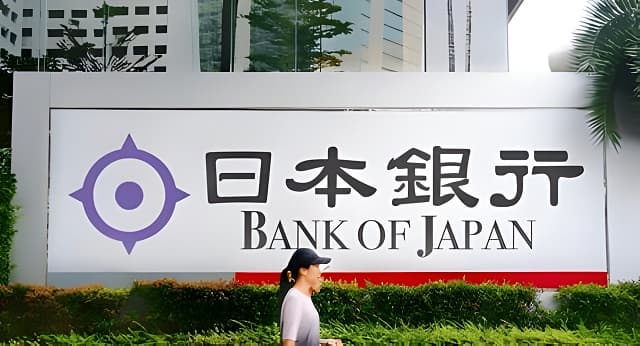Bank of Japan Breaks 17-Year Tradition with Interest Rate Hike

Bank of Japan Breaks 17-Year Tradition with Interest Rate Hike
On Tuesday, the Bank of Japan (BOJ) declared the termination of its negative interest rate policy and raised borrowing costs for the first time in 17 years.
The negative rates were a component of Japan’s aggressive monetary easing program.
In a statement, the central bank stated that it will strive to maintain the uncollateralized overnight call rate at approximately 0 to 0.1 percent, shifting away from the previous negative 0.1% level, thereby keeping rates close to zero.
This marks Japan’s first interest rate increase since 2007 and signifies the conclusion of an extended period of extremely loose monetary policy aimed at stimulating the economy.
Further details regarding the decision and potential future rate hikes will be provided during BOJ Governor Kazuo Ueda’s press conference later on Monday.
According to the Nikkei newspaper, Japanese Prime Minister Fumio Kishida expressed trust in the Bank of Japan, stating that the decision “is in their hands.”
Read Also: Could China miss its economic growth target in 2024?
Significant symbolic hike

This rate hike holds great symbolic importance as it marks the first increase in 17 years,” mentioned Izumi Devalier, head of Japan economics at BofA Securities, before the announcement. Nevertheless, the impact on the economy is negligible.
Devalier predicts that the Bank of Japan will probably maintain loose monetary conditions.
The increase in rates will result in higher costs for loans for both consumers and businesses.
Japanese stocks encountered volatility on Tuesday following the increase in interest rates, while the yen depreciated by 0.39% against the dollar, settling at 149.74.
Understanding the Bank of Japan’s monetary policy
During the 15 years following the financial crash of 2007 and 2008, many western central banks maintained interest rates at or near zero. However, Japan had already begun moving in that direction by the mid-1990s. This decision was made in an effort to stimulate spending and inflation in an aging society with negative population growth. Additionally, it aimed to ensure that the country’s debt repayments remained manageable, as Japan holds the highest debt-to-GDP ratio in the world.
Recently, there has been speculation that the Bank of Japan may change its interest rates, as inflation in Japan is approaching the central bank’s 2% target level for the first time in years. This has led to discussions that a rates change may occur during the upcoming BOJ meeting in either March or April.











4 thoughts on “Bank of Japan Breaks 17-Year Tradition with Interest Rate Hike”